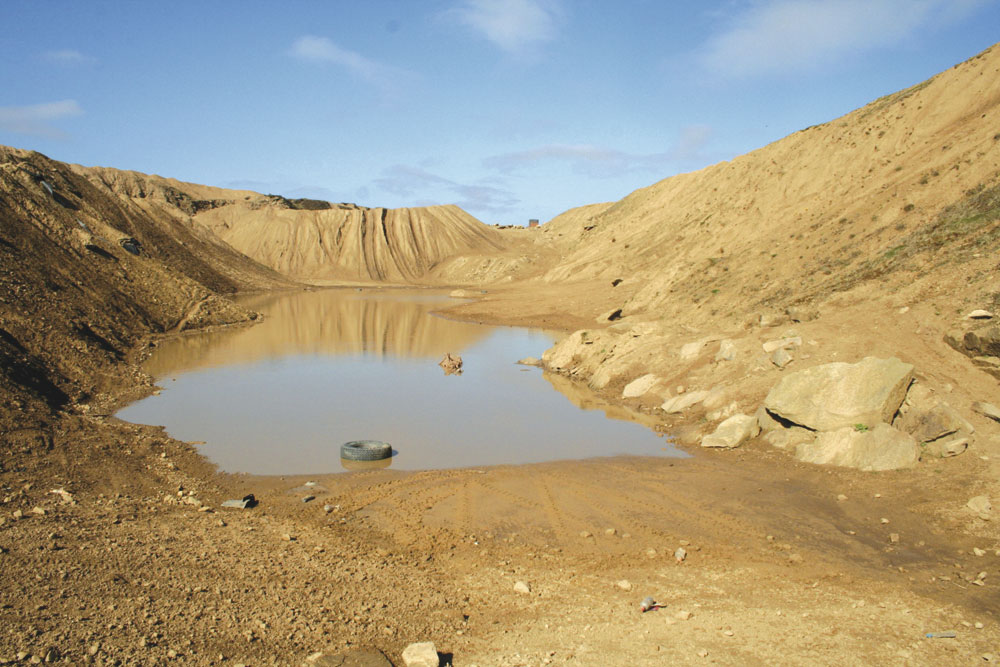Preserving The Past

Making a positive impact on the environment through the restoration of sites while maintaining an element of the quarrying history of the landscape
By Jessica Morgan, mineral planning consultant/geologist at The Mineral Planning Group
Restoration is a major aspect of any modern mineral working. Realistically, planning permission should only be granted for mineral operations where satisfactory restoration can be achieved following extraction.
One of the national objectives for minerals planning, as stated in Minerals Policy Statement 1: Planning and Minerals, is: ‘To protect and seek to enhance the overall quality of the environment once extraction has ceased, through high standards of restoration’.
Government policies also require rolling restoration strategies, wherever practicable, to allow restoration to commence at the earliest opportunity and continue throughout the life of the development. This ensures that restoration has begun and allows the planning authority to monitor and assess the standard and success of restoration as extraction continues.
Based on the above policies and government recommendations, it is very rare to encounter a quarry where working has ceased, but no restoration has been established in any part of the site. Even historic mineral workings that have simply been abandoned or left derelict will have, over time, been subjected to natural regeneration and will slowly but surely have integrated into the surrounding landscape.
The Mineral Planning Group (MPG) was recently approached by a client who owned a site in Yorkshire that, to date, had no obvious restoration and little or no natural regeneration since it was first worked as a small quarry over 150 years ago.
Situated in the Pennine Uplands area, the site (registered as common land) is now a much larger, sandstone quarry, which has been inactive for around four years. Since quarrying ceased, restoration should have been completed but unauthorised motorbike scramblers and 4x4 drivers have been illegally accessing the site for some time, which has had a substantial detrimental impact on the restoration attempts at the site.
Over the years, the operator had attempted to implement the restoration scheme for the site, only to find that within days of planting or seeding taking place, vehicles had traversed the restored areas and damaged the restoration works causing all attempts to fail.
The impact of vehicles driving over the site for some years had also compacted the soils to such a degree that it was very difficult for planting to become established without importing soils from elsewhere. All restoration attempts had been resoundingly unsuccessful.
The land operator had made a commitment to the restoration of the site by providing a restoration bond and by beginning the restoration, albeit unsuccessful. In addition, the motorcycle use across the site, which resulted in associated fly tipping, presented some major issues.
MPG had been contacted to find a solution to this problem to facilitate the restoration of the site back to moorland, in accordance with the planning conditions and a legal agreement previously signed by the client.
The operator faced a difficult task as they had an obligation to restore the site. To simply leave the situation as it is at present would result in a permanent loss of UK BAP priority habitat, which is against all government recommendations.
During a site visit to the quarry, the scale of the task could be seen. The site had a sandy base, with deep channels (courtesy of the motorbikes) carved out of the hummocky remains of the quarry floor and flanks. There was nothing to be seen but the quarry faces above and the barren quarry floor below. The site showed flecks of heather that had managed to survive the neighbouring scrambling and this was the full extent of any signs of life within the site.
The restoration of the site back to moorland was the only option for this location as it was originally moorland, prior to mineral extraction, which would fit in with the wider strategy of increasing or maintaining moorland coverage and habitats across the UK.
The previous low-level restoration attempts had been unsuccessful, as the terrain that appealed to the motorcyclists still remained and would continue unless additional material was brought into the site. Restoration infill appeared to be the only option to allow the site to be properly and successfully restored with the aim of creating a flat plateau moorland landscape that had existed pre-quarrying.
The factors that should be assessed when proposing a site that could accept inert wastes were all considered and the conclusion was that the quarry is in an ideal location in terms of road networks, availability of materials, the need for a waste facility and the environmental conditions on the site.
The initial problem caused MPG to reassess the current restoration situation and the outcome appears to provide a solution that will result in an enhanced landscape and increased biodiversity across the site. The process of the application, the subsequent submission and consultation has also unearthed a large number of supporters for the proposal.
Restoration and subsequent aftercare is the final process in the temporary use of a site as a mineral working. The creation of a restoration scheme is the perfect opportunity for a beneficial change to the previous landscape.
MPG follows the principle that at least a small section of the land’s quarrying history should be retained to remind and enlighten visitors as to its past (with the added benefit of increased biodiversity). If approved, the restoration of this Yorkshire quarry back to an improved moorland habitat will begin next year and within the next two decades the quarrying past of the landscape will be all but gone. But with MPG’s input, a trace of the site’s quarrying past will be forever etched on the Yorkshire moorland.


